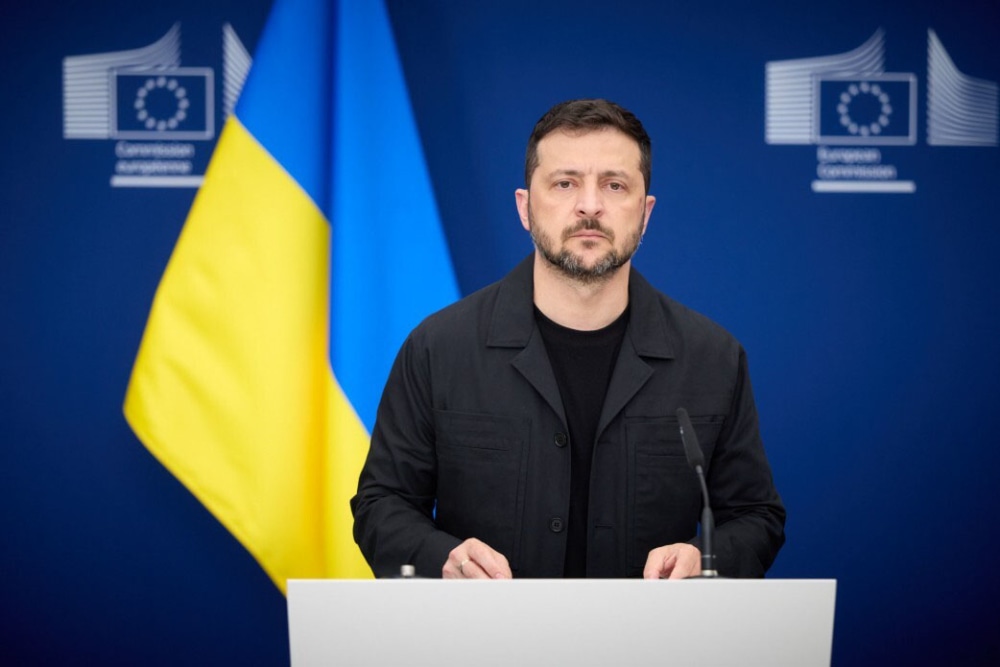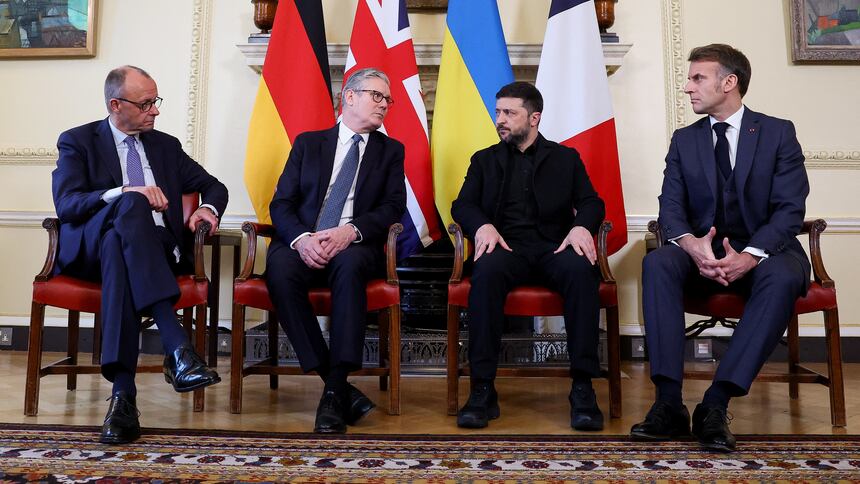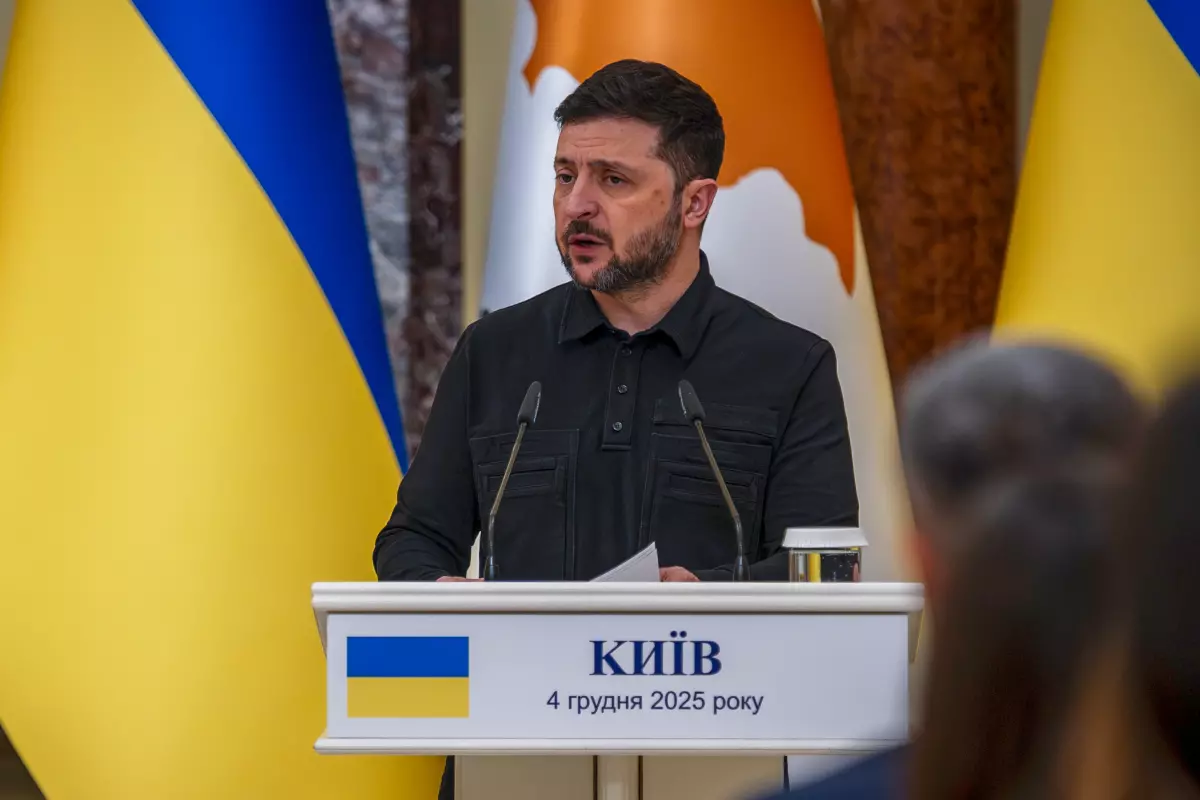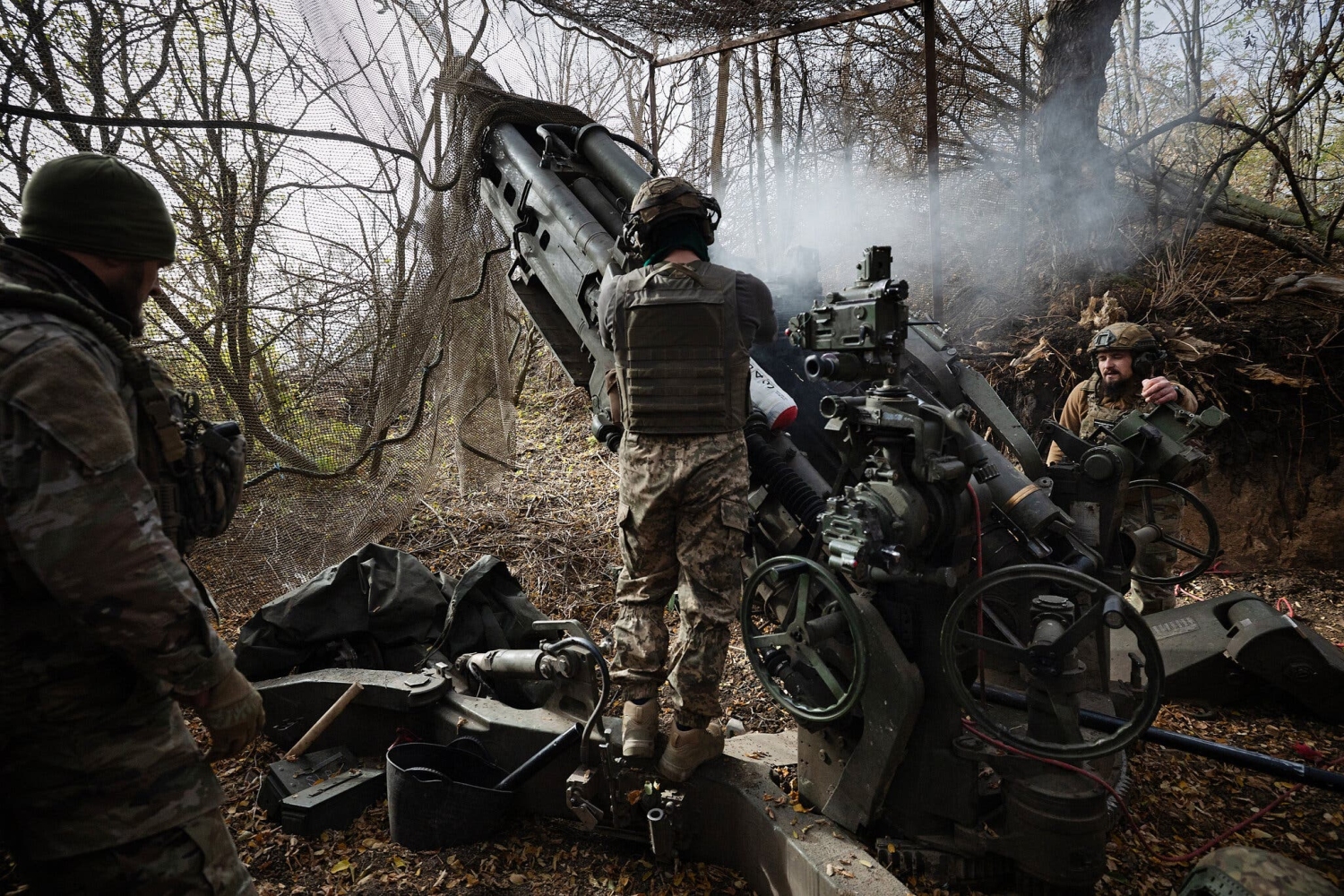
This article is more than
1 year oldRussia’s Bombardment of Ukraine Is More Lethal Than Ever
Ukraine is shooting down a far smaller proportion of Russian missile attacks than it was earlier in the war as its enemy launches more harder-to-hit weapons.
Ukraine is shooting down a far smaller proportion of Russian missile attacks than it was earlier in the war.
The worsening performance of Ukraine’s air defenses comes as Russia increases drone and missile attacks, and fires more harder-to-hit weapons, such as ballistic missiles. Kyiv is also running low on ammunition for the Western-supplied Patriot systems that have been its best defense against such attacks.
In the past six months, Ukraine intercepted around 46% of Russian missiles, compared with 73% in the preceding six-month period, according to a Wall Street Journal analysis of daily data from the Ukrainian Air Force Command. Last month the interception rate fell to 30% of missiles. The interception rate for long-range Shahed drones, which are easier to shoot down, fell just 1 percentage point to 82% in the past six months.
While the attack and interception data for several days was incomplete, and Ukraine uses such statistics for propaganda purposes, a UAF spokesman and an independent defense analyst said the data gave an overall accurate picture.
The increased bombardment is destroying infrastructure and cities while sapping Ukraine’s already sparse supply of missiles, which the country needs to keep Russia’s air force out of its skies.
Secretary of State Antony Blinken said Sunday on CBS News’s “Face the Nation” that the monthslong delay getting congressional approval for Ukraine aid has come at a cost.
“We are doing everything we can to rush this assistance out there. Europeans are doing the same,” Blinken said.
The next two or so months will be crucial for whether Russia’s air force can be held at bay before new Western air-defense supplies arrive in Ukraine, according to a European military intelligence official.
Russian attacks in Ukraine since the beginning of the war

Air/drone strike
Missile
BELARUS
RUSSIA
POLAND
Kyiv
RUSSIAN FORCES
Kharkiv
Lviv
Dnipro
UKRAINE
Zaporizhzhia
Donetsk
Kryviy Rih
MOL.
Mariupol
Odesa
Kherson
Port of
Mykolaiv
Sea of Azov
ROMANIA
Port of Izmail
Black Sea
Note: Strikes and Russian forces as of April 30
Sources: ACLED (strikes); Institute for the Study of War and AEI’s Critical Threats Project (Russian forces)
“The less of a threat Ukrainian defenses pose to Russian air power the greater the threat to Ukrainian forces on the ground and critical infrastructure,” said Douglas Barrie, a specialist in military aerospace at the International Institute for Strategic Studies, a think tank.
Over the past six months, Russia fired around 45% more drones and missiles than in the proceeding six-month period, according to the data.
Intercepting the greater volume of attacks runs down ammunition stocks while large barrages can also overwhelm Ukrainian defenses, with air-defense systems sometimes unable to reload quickly enough, a UAF spokesman said.
Russia fired almost double the number of Shahed drones, at 2,628, in the past six months compared with the previous period, the data shows. The drones are partly used to test air defenses before missiles are sent in, analysts said.
Munitions fired by Russia into Ukraine

An average of 608.5 munitions were fired each month over the past six months compared to 423.8 during the previous six months
900
800
Shot down
700
Drones
Missiles
600
Not shot down
500
400
300
200
100
0
Oct. 2022
'23
'24
Note: As of April 30
Source: Ukrainian Air Force Command
It also fired 114 ballistic and 46 hypersonic Kinzhal and Zircon missiles, compared with 33 and 27, respectively, for the previous six months. Moscow has also repurposed air-defense systems to attack Ukraine, firing 175 missiles from its S-300 or S-400 air-defense system into unoccupied Ukraine this year alone.
In the past six months, Ukraine has shot down just 10% of the ballistic missiles Russia has fired. It hasn’t intercepted any of the S-300 and S-400 missiles fired into Ukraine so far this year, according to the data.
The data show higher interception rates for cruise missiles, such as the Kh-555. The UAF says they can be intercepted with a wider range of air defense because they are typically slower and smaller. Ukraine uses midrange defense systems, such as the Western-supplied Nasams, to shoot down these missiles.
Russian munitions shot down by Ukraine

Kh-55 (Diagram below)
Shahed-136
Max speed: 115 mph
Max flying range: Up to
1,553 miles
Weight: 441 lbs.
In service: 2021
Origin: Iran
Max speed: 591 mph
Range: Up to 1,553 miles
Weight: 1.3 tons
In service: 1984
Origin: Russia
1,304
4,400
shot down
Data for Kh-555/101/55 missiles
Shahed-136
Kh-55
6-foot man
Kalibr:
407
shot
down
Iskander-K: 66
Iskander-M
and KN-23: 38
Onyx: 12
Air defense
(S-300/400): 19
Kh-35: 1
Guided aviation missiles: 206
(generally all types without categories)
Tochka U: 6
Zircon: 2
Note: 3D models are not to scale. Munitions data is from start of the war until early April.
Sources: Military Today (Shahed-136); Missile Threat (Kh-55); Missile Defense Advocacy Alliance (Kh-55 speed); Ukrainian Air Force Command (munitions data)
The Patriot is Ukraine’s only reliable way to shoot down ballistic, S-300 and hypersonic missiles. But Kyiv has few Patriot systems and has had to conserve missiles, not least as fresh U.S. supplies were held up in Washington.
Now those supplies have been unlocked, the Defense Department has said it would send more Patriot interceptors. While some of these missiles will likely come from stockpiles, others will be ordered, taking several years to be manufactured.
The UAF declined to give the exact number of Patriot systems currently operating in Ukraine but said they could be counted on one hand. President Volodymyr Zelensky has told reporters that Ukraine needs a minimum of seven additional Patriots but has also separately said 25 of the missile systems would be needed to cover all of Ukraine’s territory.
Ukraine has an array of other missile-defense systems, including Nasams and the Iris/T, though these aren’t as effective against ballistic or hypersonic missiles and anti-air missiles repurposed from defense to attack.
How a Patriot battery tracks and intercepts targets

RADAR
Radar detects and tracks missiles and other targets.
Radar sends data to remote Engagement Control
Station.
ENGAGEMENT CONTROL STATION
1
2
ECS receives the data and sends it to the Patriot Launching Station.
Interceptor missile canister
Antenna
LAUNCHING STATION
Launching Station houses remote operating module, launcher and up to 16 interceptor missiles.
Launching Station receives targets’ location from ECS through the station’s antenna.
3
INTERCEPTOR
Interceptors are fired either manually or remotely from the ECS.
4
Note: Diagram is not to scale
Source: Army Recognition
Jemal R. Brinson and Peter Champelli/THE WALL STREET JOURNAL
The air war may now come down to which side can outlast the other on missile supplies. Ukraine is dependent on its Western allies, which are struggling to make missiles fast enough.
Russia still has its own stockpiles and is capable of producing 170 missiles every month, according to a Ukrainian official. Moscow has also received supplies of drones and missiles from its allies, including Iran and North Korea.
For now, Russia continues to attack Ukraine with missiles and drones from locations to the country’s north, east and south.
The origin of missile and drone attacks on Ukraine

Number of times mentioned*
Drone
LITHUANIA
Missile
Ryazan
100
60
20
BELARUS
Bryansk
RUSSIA
Engels
Voronezh
Kursk
Belgorod
KAZAKHSTAN
RUSSIAN FORCES
UKRAINE
Rostov
Astrakhan
Volgodonsk
Yeysk
MOL.
Sea of Azov
Primorsko-Akhtarsk
Air Base
Caspian Sea
ROMANIA
Cape Tarkhankut
Cape
Chauda
Balaklava
Black Sea
BULGARIA
GEORGIA
AZERBAIJAN
ARMENIA
TURKEY
*Chart shows the number of times Ukrainian Air Force Command data mentioned certain locations as the origin of an attack, not the number of missiles or drones launched.
Source: Ukrainian Air Force Command
Roque Ruiz, Oksana Pyrozhok, Max Colchester and Lindsay Wise contributed to this article.
Write to Alistair MacDonald at Alistair.Macdonald@wsj.com, Jemal R. Brinson at jemal.brinson@wsj.com and Emma Brown at Emma.Brown@wsj.com




